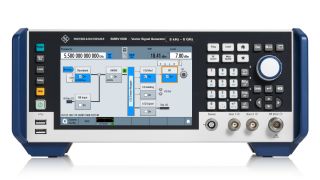WLAN-IEEE-802.11ac-Tests
Der Standard IEEE 802.11ac (Wi-Fi 5) für Funknetzwerke, die im 5-GHz-ISM-Band arbeiten, ermöglicht eine erhebliche Erhöhung des Datendurchsatzes auf fast 7 Gbit/s. Die wichtigste Verbesserung besteht in der größeren Kanalbandbreite, die durch die doppelte Anzahl von Unterträgern, mehr räumliche Datenströme (Spatial Streams) und komplexere Modulationsverfahren erreicht wird. Heutige WLAN-Geräte unterstützen typisch eine Bandbreite von 160 MHz, bis zu vier Spatial Streams und 256QAM-Modulation. Diese fortschrittlichen Funktionen machen in Forschung, Entwicklung und Produktion entsprechende Testlösungen notwendig.


















